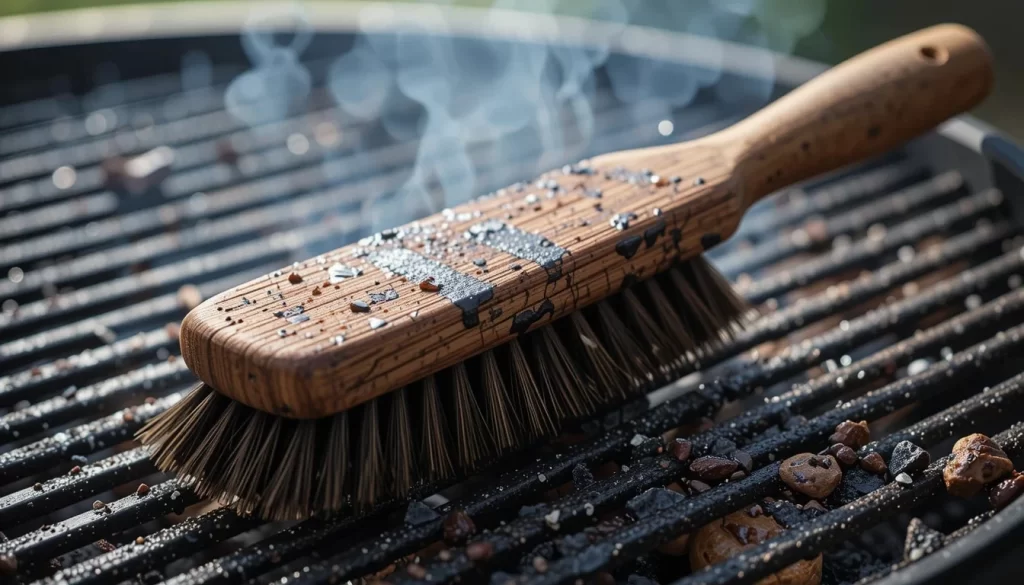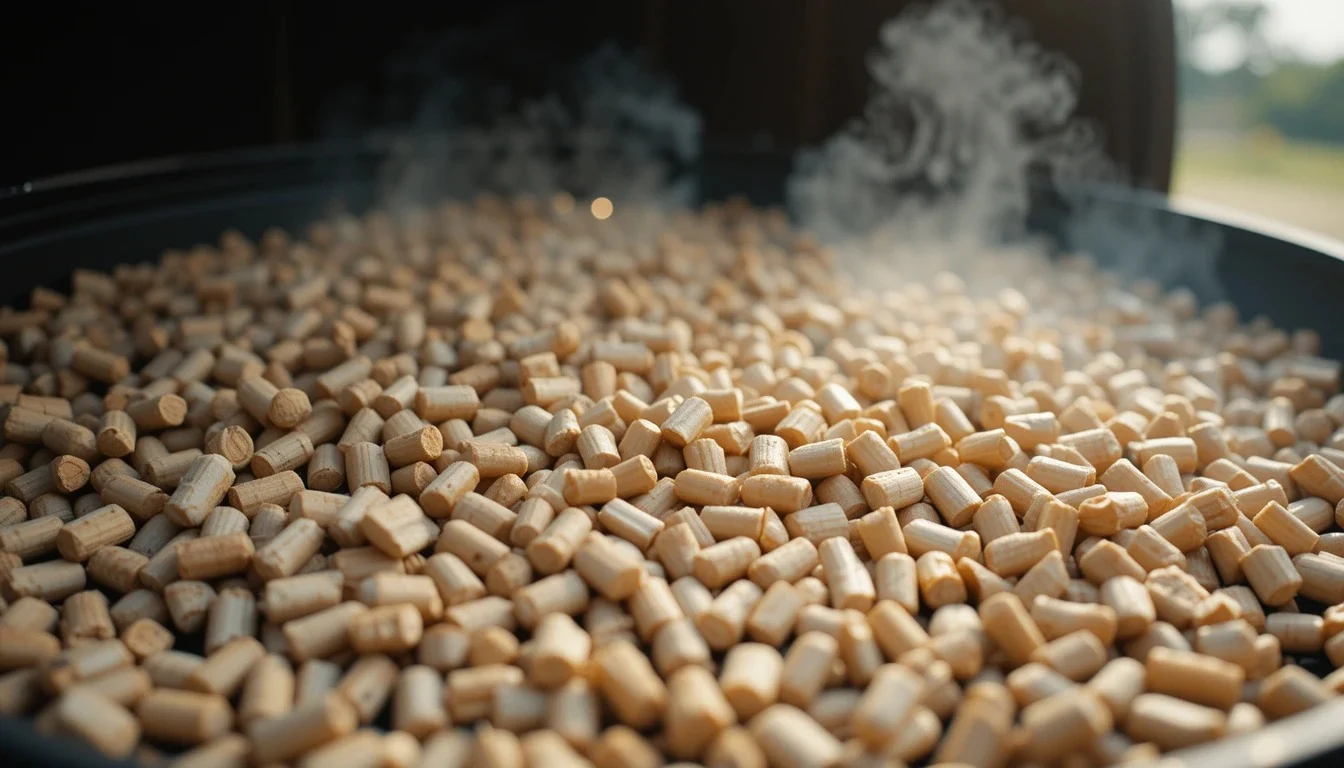Essential Smoker Maintenance Tips for 2025: Keep Your BBQ Game Strong!

Hey there, fellow smoke enthusiasts! Did you know that a well-maintained smoker can last up to 20 years? That’s right! Whether you’re a seasoned pitmaster or just starting your smoky journey, proper maintenance is key to keeping your smoker in top-notch condition. In this guide, we’ll dive into essential smoker maintenance tips that’ll help you achieve mouthwatering results every time. Let’s fire up those maintenance skills and keep your BBQ game strong!
Regular Cleaning: The Foundation of Smoker Care
Let me tell you, folks, there’s nothing quite like the smell of a well-maintained smoker wafting through the backyard on a lazy Sunday afternoon. But here’s the thing – that beautiful aroma doesn’t happen by magic. Nope, it’s all about the tender loving care you give your smoker. And let me tell you, I’ve learned this the hard way.
I remember the first time I got my hands on a proper smoker. I was so excited to start churning out mouth-watering briskets and fall-off-the-bone ribs that I completely neglected the most important part: cleaning. Boy, was that a mistake! After a few uses, my smoker started to smell… well, let’s just say it wasn’t appetizing. That’s when I realized that regular cleaning isn’t just a suggestion – it’s the foundation of smoker care.
So, let’s start with the basics. After each use, you gotta remove those ashes and debris. It’s tempting to leave it for “next time,” but trust me, future you will thank present you for taking care of it right away. I like to wait until the smoker’s cooled down completely, then use a small shovel or ash tool to scoop out all that leftover gunk. It’s not glamorous work, but it’s necessary.
Now, onto the deep clean. This is where the real magic happens. I typically do this every few uses, depending on how often I’m firing up the smoker. Grab yourself a good grill brush and a mild soap solution. I mix a little dish soap with warm water, and it works like a charm. Scrub down the entire interior, paying extra attention to those hard-to-reach corners where grease and grime love to hide.
Speaking of grease and grime, let’s talk about those grates. They’re the unsung heroes of your smoker, and they need some serious TLC. I learned this lesson when I once served my family some burgers that tasted suspiciously like last week’s pulled pork. Not my finest moment. Now, I make sure to clean those grates thoroughly after each use. A stiff wire brush usually does the trick, but for stubborn bits, I’ll soak them in hot, soapy water before scrubbing.
Don’t forget about the chimney and vents! These are crucial for proper airflow, which is essential for maintaining consistent temperatures. I once had a smoking session go completely haywire because my chimney was clogged with creosote. Now, I make it a point to inspect and clean these areas regularly. A long-handled brush works wonders for reaching up into the chimney.
Lastly, don’t neglect the exterior of your smoker. It might not affect the flavor of your food directly, but a clean exterior prevents rust and keeps your smoker looking sharp. I usually just wipe it down with a damp cloth, paying extra attention to any areas where moisture might collect.
Seasoning and Protecting: Enhance Flavor and Longevity
Now, let’s talk about seasoning. And no, I don’t mean throwing some salt and pepper on your brisket (although that’s important too!). I’m talking about seasoning your smoker itself. This is a step that a lot of folks overlook, but it’s crucial for both flavor and longevity.
When I first got my smoker, I thought the initial seasoning was a one-and-done deal. Boy, was I wrong! Over time, that protective layer can wear down, especially if you’re cleaning your smoker regularly (which you should be!). So, I’ve made it a habit to re-season my smoker periodically. It’s like giving it a spa day – a little pampering goes a long way.
Here’s my process: I’ll fire up the smoker to a high temperature, around 300°F, and let it run for about an hour to burn off any residue. Then, I’ll let it cool down a bit before applying a thin coat of cooking oil to all the interior surfaces. I prefer to use a high-smoke point oil like grapeseed or avocado oil, but vegetable oil works fine too. Then, I’ll crank up the heat again and let it smoke for another couple of hours. This creates a nice, protective layer that not only prevents rust but also adds to that delicious smoky flavor we all love.
Speaking of preventing rust, this is something you’ve gotta stay on top of. I learned this the hard way when I left my smoker uncovered during a particularly rainy week. Let’s just say it wasn’t pretty. Now, I make sure to apply a thin coat of cooking oil to the exterior metal surfaces after each deep clean. It’s a simple step that can save you a lot of headache down the line.
Another often overlooked aspect of smoker care is the gaskets. These are the seals that keep all that delicious smoke and heat where it belongs – inside your smoker. Over time, these can wear down or become damaged. I check mine regularly and replace them if I notice any gaps or wear. Trust me, a proper seal can make a world of difference in maintaining consistent temperatures and smoke levels.
While you’re at it, give all the bolts and screws a once-over. I once had a smoking session nearly ruined because a loose bolt was letting heat escape. Now, I keep a wrench handy and tighten any loose hardware I find during my regular inspections. It’s a small step that can prevent big problems.
Lastly, let’s talk about protection from the elements. I know it’s tempting to leave your smoker out on the patio, ready for action at a moment’s notice. But unless you live in a perfectly dry, temperate climate (and if you do, I’m jealous), you’re gonna want to invest in a good cover. I learned this lesson after a particularly brutal winter left my uncovered smoker looking like it had aged a decade. Now, I always cover my smoker when it’s not in use. It’s an extra step, sure, but it’s worth it to keep your smoker in tip-top shape.
Troubleshooting and Maintenance: Addressing Common Issues
Alright, folks, let’s get into the nitty-gritty of smoker maintenance. Even with the best care, issues can pop up. But don’t worry – with a little know-how, you can keep your smoker running smoothly for years to come.
First up, let’s talk about temperature gauges. These little gadgets are the eyes and ears of your smoking operation, but they’re not infallible. I learned this the hard way when I couldn’t figure out why my ribs were coming out dry and overcooked. Turns out, my gauge was off by a good 50 degrees! Now, I make it a point to check my gauge regularly against a reliable digital thermometer. If it’s consistently off, it’s time for a replacement.
Speaking of temperature monitoring, don’t forget about your thermometer probe. This little guy is crucial for getting accurate readings, but it can get gunked up over time. I give mine a good cleaning after each use with a mild soap solution and a soft cloth. Be gentle, though – you don’t want to damage the sensitive electronics.
Now, let’s talk about the heart of your smoker – the firebox. This is where the magic happens, but it’s also where problems can start. I once noticed that my smoker wasn’t holding temperature as well as it used to. Upon inspection, I found a small crack in the firebox. It wasn’t major, but it was enough to affect performance. Now, I make sure to give my firebox a thorough once-over during my regular maintenance routine. Look for any cracks, warping, or other damage. If you catch issues early, they’re often easier (and cheaper) to fix.
Don’t forget about the moving parts of your smoker. Things like hinges and vents can get stiff over time, especially if they’re exposed to the elements. I learned this when I nearly pulled my back out trying to open my smoker lid one day. Now, I keep a can of food-grade lubricant handy and give all the moving parts a little squirt during my maintenance routine. Just be sure to wipe off any excess – you don’t want that stuff getting into your food!
Lastly, let’s talk about the smoker’s arch-nemesis: rust. Even with the best care, rust can still rear its ugly head, especially in humid climates. I once made the mistake of ignoring a small rust spot on my smoker, thinking it wasn’t a big deal. Well, let me tell you, that little spot turned into a big problem faster than you can say “pulled pork.” Now, I address any rust spots as soon as I see them. For small spots, I’ll sand them down and apply a high-heat resistant paint. For larger areas, it might be necessary to replace the affected part entirely.
Remember, folks, a little preventative maintenance goes a long way. It might seem like a hassle sometimes, but trust me, it’s worth it when you’re serving up perfectly smoked meats to your friends and family. Plus, there’s something satisfying about knowing your smoker inside and out. It’s not just a piece of equipment – it’s a part of your outdoor cooking arsenal, and it deserves your respect and care.
So there you have it – my tried and true tips for keeping your smoker in prime condition. It might seem like a lot, but once you get into the habit, it becomes second nature. And the payoff? Consistently delicious smoked foods and a smoker that’ll be part of your backyard for years to come. Now, if you’ll excuse me, I think I hear a brisket calling my name!
Conclusion
There you have it, folks! By following these smoker maintenance tips, you’ll keep your beloved BBQ companion in prime condition for years to come. Remember, a little TLC goes a long way in preserving your smoker’s performance and enhancing those delicious flavors we all crave. So, roll up your sleeves, grab your cleaning supplies, and show your smoker some love. Your taste buds (and your guests) will thank you! Happy smoking!
FAQ
- How often should I clean my smoker?
Clean your smoker after each use, with a deep clean every 5-10 smoking sessions. - Can I use water to clean my smoker?
Yes, but use minimal water and dry thoroughly to prevent rust. - How do I know if my smoker needs re-seasoning?
If food starts sticking or you notice bare metal spots, it’s time to re-season. - What’s the best way to store my smoker?
Store in a dry place, preferably covered, away from direct sunlight and rain. - How can I prevent rust on my smoker?
Keep it clean, dry, and apply a thin layer of cooking oil after each use.
POR
- amazingribs.com/technique-and-science/grill-and-smoker-setup-and-firing/how-clean-and-maintain-your-smoker-or/
- bbqhost.com/smoker-maintenance/
- smokingmeatforums.com/threads/smoker-maintenance.275416/


